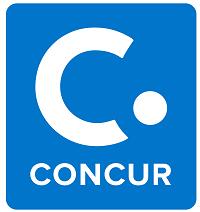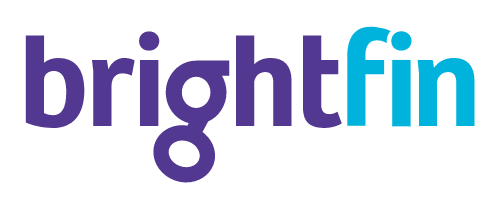Description

Concur

Xpenditure Expenses
Comprehensive Overview: Concur vs Xpenditure Expenses
Sure, here's a comprehensive overview of Concur and Xpenditure Expenses, focusing on their primary functions, target markets, market share, and key differentiating factors:
a) Primary Functions and Target Markets
Concur:
-
Primary Functions: Concur, a part of SAP, is a leading provider of integrated travel and expense management services. Its primary functions include managing travel bookings, automating expense reporting, and integrating with third-party financial and accounting software for end-to-end financial management. Concur's platform is designed to provide visibility into employee spending and to simplify the process of managing travel expenses.
-
Target Markets: Concur targets a wide range of organizations, from small businesses to large enterprises. Its scalable solutions are particularly appealing to multinational corporations that require robust travel and expense management strategies to handle complex and high-volume transactions.
Xpenditure Expenses:
-
Primary Functions: Xpenditure (now part of Rydoo) is a cloud-based expense management software solution designed to streamline the process of expense tracking and reporting. Its functionalities include receipt scanning using OCR technology, automated expense approvals, and real-time expense tracking. It is particularly focused on simplifying the process of capturing and reconciling receipts and expenses for employees and finance teams.
-
Target Markets: Xpenditure primarily targets small to medium-sized enterprises (SMEs) and startups. Its user-friendly interface and efficient processing make it ideal for businesses looking to move away from manual spreadsheet-based expense processes but may not need the extensive functionalities required by larger enterprises.
b) Market Share and User Base
-
Concur: As a leader in the travel and expense management market, Concur commands a significant share of the market. Being part of SAP adds to its credibility and reach, making it a preferred choice for large and complex organizations. Its user base includes thousands of companies worldwide, with millions of users relying on its services for their expense and travel needs.
-
Xpenditure: While not as large as Concur in terms of market share, Xpenditure has carved a niche for itself among SMEs and startups. Now under the Rydoo brand, it has broadened its reach and capabilities in the expense management space, gaining popularity with companies that require efficient, straightforward solutions without the complexity of larger systems.
c) Key Differentiating Factors
-
Integration and Ecosystem:
- Concur: Offers extensive integrations with SAP’s ecosystem and other third-party applications, making it a go-to for businesses already utilizing SAP products. Its robust API capabilities support large enterprises with complex integration needs.
- Xpenditure: Offers simpler integrations, often focusing on popular accounting software like Xero and QuickBooks, which suits smaller businesses and startups looking for quick and easy setup.
-
User Experience and Complexity:
- Concur: Known for its comprehensive features, but this can come with a steeper learning curve and more complex user experience. The software is highly configurable to meet the specific needs of large organizations.
- Xpenditure: Emphasizes ease of use, providing a more intuitive user experience. Its simplicity makes it appealing to businesses that don't require extensive customization and want to implement a solution quickly.
-
Pricing Structure:
- Concur: Tends to have a higher price point due to its extensive features and enterprise focus, often fitting larger corporations’ budgets.
- Xpenditure: Generally offers a more competitive pricing model, appealing to SMEs and startups that need to manage costs effectively.
-
Scalability and Flexibility:
- Concur: Highly scalable, ideal for businesses with extensive or growing international operations.
- Xpenditure: More flexible for smaller businesses or those with limited travel expense management needs.
In summary, Concur and Xpenditure serve somewhat overlapping but distinct segments of the market, with Concur being more suited to large enterprises due to its comprehensive features and integrations, and Xpenditure catering to SMEs and startups with its simplicity and ease of use.
Contact Info

Year founded :
Not Available
Not Available
Not Available
India
Not Available

Year founded :
Not Available
Not Available
Not Available
Not Available
Not Available
Feature Similarity Breakdown: Concur, Xpenditure Expenses
Concur and Xpenditure Expenses (now part of Rydoo Expense) are both expense management platforms designed to streamline and automate the expense reporting process for businesses. Here's a breakdown of their feature similarities and differences:
a) Core Features in Common
-
Expense Reporting:
- Both Concur and Xpenditure offer the ability to create, submit, and approve expense reports through their platforms. This includes capturing expenses via receipts, categorizing them, and linking them to relevant cost centers or projects.
-
Receipt Scanning:
- Each solution provides the functionality to scan and digitize receipts using OCR (Optical Character Recognition) technology. This feature allows users to capture receipt data and automatically fill out expense forms.
-
Integration Capabilities:
- Both platforms integrate with financial and accounting systems such as SAP, QuickBooks, and Xero, enabling seamless data transfer and financial reconciliation.
-
Mobile Application:
- Mobile apps for iOS and Android allow users to manage expenses, capture receipts, and review approvals on the go, enhancing mobility and flexibility.
-
Policy Compliance:
- Concur and Xpenditure both offer tools to enforce corporate spending policies. These tools help flag non-compliant expenses, reducing errors and potential fraud.
-
Multi-Currency and Localization:
- Both are equipped to handle multi-currency transactions, making them suitable for international businesses. Localization features support various languages and regional tax regulations.
b) User Interface Comparison
-
Concur:
- Concur’s interface is comprehensive, designed to cater to larger enterprises. It offers a robust set of features but can come across as complex and may require some training. The dashboard is detailed, providing a wealth of information but might overwhelm new users initially.
-
Xpenditure (Rydoo):
- Xpenditure’s interface is user-friendly and streamlined, with a focus on intuitive design. It is geared towards quick usability with a clean and modern aesthetic. This can be advantageous for smaller businesses or teams looking for simplicity and ease of use.
c) Unique Features
-
Concur:
- Travel Module: In addition to expense management, Concur offers a comprehensive travel management module, allowing users to book travel, manage itineraries, and link travel expenses automatically. This integration provides an end-to-end solution for businesses handling both travel and expenses.
- Advanced Analytics & Reporting: Concur provides advanced analytics, customizable reporting, and dashboards that offer deep insights into spend patterns, trends, and policy compliance.
-
Xpenditure (Rydoo):
- Per Diem Automation: Rydoo offers advanced per diem functionalities that automatically calculate daily allowances based on travel schedules, which is particularly beneficial for companies with employees frequently on business trips.
- Social Collaboration Features: Offers features that support communication and collaboration directly within the platform, such as commenting on expenses, which can streamline the approval process.
In summary, while both platforms share many core functionalities focused on expense management, Concur distinguishes itself with robust travel management and advanced analytic capabilities suited for larger enterprises. In contrast, Xpenditure offers a simpler, more intuitive experience with specialized features like per diem automation, ideal for fast-growing and smaller organizations.
Features

Expense Management
Travel Management
Audit and Compliance
Analytics and Reporting

Expense Management
Integration
Expense Tracking
Analytics and Reporting
Best Fit Use Cases: Concur, Xpenditure Expenses
Concur and Xpenditure Expenses (now part of Rydoo) are both expense management tools designed to streamline and automate the process of managing business expenses. They cater to different types of businesses and projects based on their unique features and capabilities. Here's a breakdown of the best-fit use cases for each:
Concur
a) For what types of businesses or projects is Concur the best choice?
-
Large Enterprises and Corporations:
Concur is particularly well-suited for large enterprises and multinational corporations due to its robust features that support complex requirements and large user bases. It provides advanced functionalities for global business operations, including multi-currency and multi-language support, global compliance, and intricate reporting tools. -
Complex Travel and Expense Management:
Companies that require detailed travel management features alongside expense management would benefit from Concur. It integrates travel booking, expense capture, and reporting into a single platform, which is ideal for organizations with frequent business travel needs. -
Businesses Seeking Integration with ERP Systems:
Concur offers deep integrations with popular ERP systems like SAP, which can be a crucial advantage for businesses looking to streamline their financial and HR processes across different platforms. -
Industries Requiring Compliance and Audit Trails:
Industries that face strict regulatory requirements or need comprehensive audit trails, such as pharmaceuticals, finance, and consulting, would find Concur beneficial due to its focus on compliance and detailed audit capabilities.
Xpenditure Expenses (Rydoo)
b) In what scenarios would Xpenditure Expenses be the preferred option?
-
Small to Medium-sized Enterprises (SMEs):
Rydoo is a great choice for SMEs due to its user-friendly interface and scalable pricing plans. It allows smaller companies to efficiently manage expenses without overwhelming them with the complexity that might come with larger systems. -
Companies with Remote or Distributed Teams:
Businesses with remote or field teams can leverage Rydoo’s mobile app for quick and on-the-go expense reporting, which is key for maintaining productivity and efficiency in a decentralized environment. -
Startups Seeking Quick Setup and Implementation:
Startups or fast-growing companies that require a quick setup and easy implementation might prefer Rydoo for its ease of use and relatively straightforward onboarding process. -
Enterprises Focusing on Digital Transformation:
Companies focused on digital solutions for their operations would find Rydoo appealing, as it supports digital receipt capture and integrates seamlessly with various business tools through API connections.
Catering to Different Industry Verticals and Company Sizes
Concur:
-
Industry Verticals:
Concur is widely used in industries such as finance, pharmaceuticals, and technology where there is a high volume of travel and expenses, regulatory compliance, and a need for detailed reporting. -
Company Sizes:
It is best suited for large multinational firms and medium-sized businesses ready to scale up, seeking a comprehensive solution that can handle complex processes.
Xpenditure Expenses (Rydoo):
-
Industry Verticals:
Rydoo is versatile across various industries like technology startups, consultancy, and retail, especially where there is a need for simple, yet effective expense tracking. -
Company Sizes:
This solution is often preferred by small to medium-sized businesses and startups that require flexible, affordable, and easy-to-use expense management without extensive customization needs.
Both platforms offer unique advantages depending on the specific needs, size, and industry of the business. Concur leans towards complex, large-scale requirements while Rydoo provides a more straightforward, agile solution for smaller companies or those seeking simplicity and efficiency.
Pricing

Pricing Not Available

Pricing Not Available
Metrics History
Metrics History
Comparing undefined across companies
Conclusion & Final Verdict: Concur vs Xpenditure Expenses
When assessing Concur and Xpenditure Expenses as expense management tools, several factors need to be considered to determine which offers the best overall value. Both have their unique strengths and potential drawbacks, making them suitable for different types of users and organizational needs.
a) Overall Value:
- Concur is generally recognized for its comprehensive features, scalability, and ability to integrate with various enterprise systems, making it a robust choice for large organizations with complex expense management needs.
- Xpenditure Expenses (now part of Rydoo) tends to offer more streamlined features, with a focus on usability and simplicity, which can be beneficial for smaller to mid-sized businesses seeking straightforward expense management capabilities without the complexity.
Considering all factors, Concur offers the best overall value for large enterprises due to its extensive capabilities, integrations, and global support. Meanwhile, Xpenditure Expenses is better suited for small to mid-sized companies needing simplicity and ease of use.
b) Pros and Cons:
Concur:
- Pros:
- Comprehensive feature set, including travel management and invoice processing.
- Strong integration capabilities with ERP systems.
- Suitable for global organizations with multi-currency and multilingual needs.
- Detailed reporting and analytics functionality.
- Cons:
- Higher cost, potentially prohibitive for smaller businesses.
- Can be complex to set up and use, with a steeper learning curve.
- May require dedicated IT resources for implementation and maintenance.
Xpenditure Expenses (Rydoo):
- Pros:
- User-friendly interface with simple setup.
- Cost-effective for smaller and medium-sized businesses.
- Lightweight solution that doesn't require extensive IT support.
- Effective mobile capabilities for capturing receipts and managing expenses on the go.
- Cons:
- Less comprehensive feature set may not meet the needs of larger organizations.
- Limited integration options compared to Concur.
- Reporting and analytics might not be as advanced.
c) Recommendations:
-
Identify Organizational Needs: A clear assessment of an organization’s size, existing systems, and specific expense management requirements should guide the choice. Larger organizations will benefit from Concur’s extensive capabilities and integrations, whereas smaller businesses will appreciate the simplicity and cost-effectiveness of Xpenditure Expenses.
-
Budget Considerations: Concur's pricing may be justified for organizations that can leverage its full potential, while Xpenditure is better suited for those with budget constraints.
-
Trial Periods: Both products offer free trials; users should leverage these to evaluate real-world applicability and ease of adoption within their teams.
-
Integration Needs: Consider the existing business systems and determine which tool better aligns with them to ensure seamless integration and data flow.
Ultimately, the decision between Concur and Xpenditure Expenses hinges on company size, complexity of needs, and budget, making it crucial for organizations to align their current and future needs with the capabilities of these expense management tools.
Add to compare
Add similar companies



